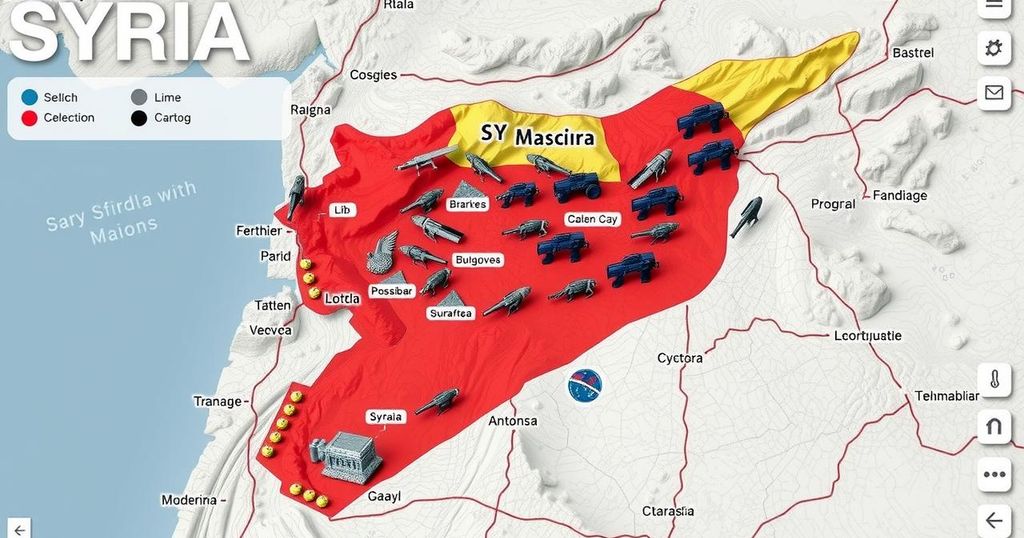What Is Happening in Syria: A Comprehensive Overview of Recent Developments

In a surprising turn of events, rebel forces in Syria have recently toppled President Bashar Al Assad’s regime, culminating in the declaration of freedom from tyranny by Hayat Tahrir Al Sham (HTS). Significant advances, including the capture of Damascus and key cities, indicate a substantial shift in the conduct of the civil war. Prime Minister Mohammad Jalali has expressed willingness to cooperate with opposition forces, while concerns loom over the whereabouts of Assad following his reported flight from the country.
The recent upheaval in Syria has taken many, including the allies and adversaries of President Bashar Al Assad, by surprise as Hayat Tahrir Al Sham (HTS) declared the country liberated. The Syrian Civil War, which ignited in 2011 during the Arab Spring, has seen a significant shift with the rebels overcoming the Assad regime and capturing Damascus. This article outlines the critical developments in this evolving situation.
1. The Syrian Civil War began as a reaction to the Arab Spring, with Bashar Al Assad facing early instability, but found support from Russia and Iran that allowed him to counter the rebels effectively.
2. For several years, while the conflict remained unresolved, conditions in Syria stabilized somewhat after the Syrian Army and its allies suppressed rebel actions.
3. Recent events escalated as HTS and the Free Syrian Army made significant advances, notably capturing Aleppo – a central city in Syria that had been a stronghold of insurgent activity.
4. Following this breakthrough, rebel forces successfully seized other key cities such as Daraa, Quneitra, Suwayda, and Homs leading up to an offensive against the capital, Damascus. The Assad regime’s defenses appeared diminished due to Iranian and Russian commitments being diverted to other military endeavors.
5. Rebel fighters notably took control of Saydnaya prison, liberating political prisoners held by Assad’s regime, a symbolic victory for the opposition.
6. The rebels rapidly pushed into Damascus and, within hours, succeeded in dismantling a regime that has held power for over fifty years, marking a historic political shift. The leadership cycle had persisted through the Assad family, with Bashar succeeding his father, Hafez Al Assad.
7. As chaos ensued, Prime Minister Mohammad Jalali confirmed the government’s readiness to engage with the opposition and facilitate a governing transfer, emphasizing the need for preservation of public properties.
8. Reports circulated about Assad fleeing the nation just as the rebels advanced into the capital, with speculation surrounding the circumstances of his departure.
9. There have been conflicting reports suggesting that Assad’s aircraft may have been struck down during his escape, although these claims remain unverified.
10. Finally, HTS proclaimed Syria free from the authoritarian rule of Assad, urging combatants to safeguard state assets, which have temporarily been entrusted to former Prime Minister Jalali until an official transition occurs. Public reactions included jubilant celebrations and the dismantling of statues commemorating the Assad legacy.
The conflict in Syria is rooted in a broader context of the Arab Spring uprising, which began in 2011. The initial protests against the Assad government sparked a violent crackdown, leading to a full-blown civil war. Over the years, external interventions from foreign powers like Russia and Iran have complicated the situation, but recent shifts in the dynamics suggest a potential turning point in the long-standing conflict. The recent explosion of rebel activity signifies not only military victories but also a significant challenge to the entrenched power structures in Syria.
The unfolding events in Syria represent a pivotal moment in the nation’s protracted civil war. The collapse of the Assad regime, symbolized by the capture of Damascus and the governmental transition led by Prime Minister Jalali, marks a historic turning point. As the public rises against the remnants of Assad’s rule, future governance and stability in Syria remain uncertain amidst ongoing speculation regarding the fate of Assad himself. This transitional phase will critically shape Syria’s political landscape moving forward.
Original Source: www.hindustantimes.com








